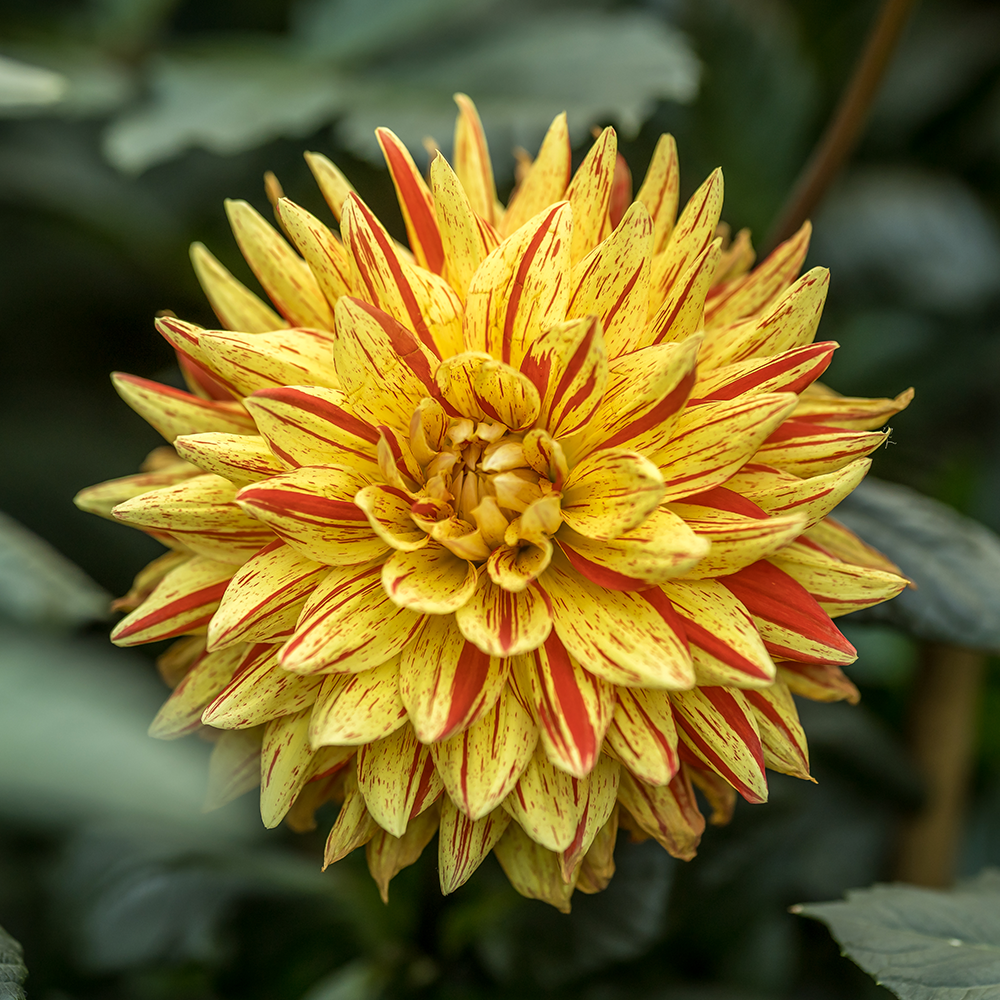Cacao (Theobroma cacao)
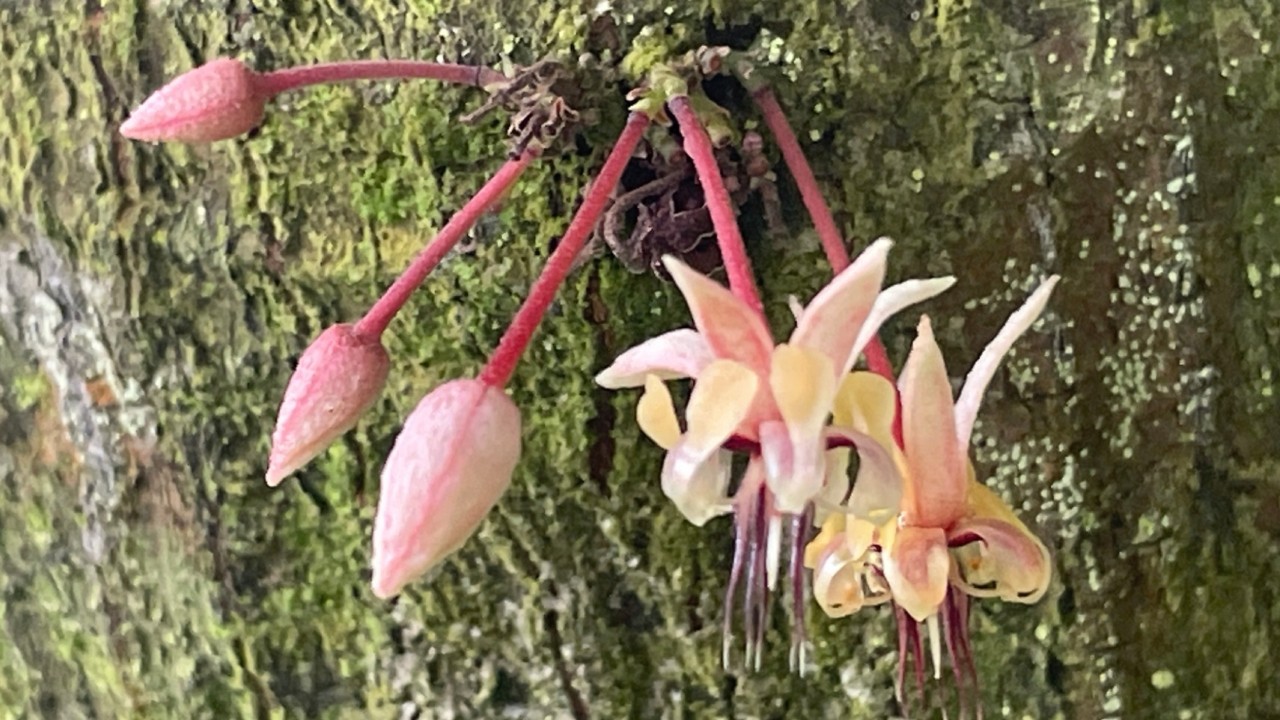
While many of us eat chocolate on a daily basis, it’s not every day you get to a chance to see the trees and flowers that produce the cacao seeds that are processed into that sweet, fragrant, intensely alluring treat! Notice anything a bit bizarre about the flowers in the photo above? Hint: it’s not the flowers themselves, but what they are growing from. Yes, instead of growing on new shoots and stems, cacao flowers grow directly from the trunk and main branches of the cacao tree (Theobroma cacao)!
This unusual trait, called cauliflory (Latin for ‘stem flower’), is proposed to help facilitate pollination, particularly by animals active in the understory layer of forests, and help support the growth of large, heavy fruits, also eaten and spread by animals. While this might seem like a rare and exotic trait, many familiar fruits are also cauliflorous, including figs (Ficus spp. and cultivars), papaya (Carica papaya), jackfruit (Artocarpus heterophyllus) and durian (Durio zibethinus).
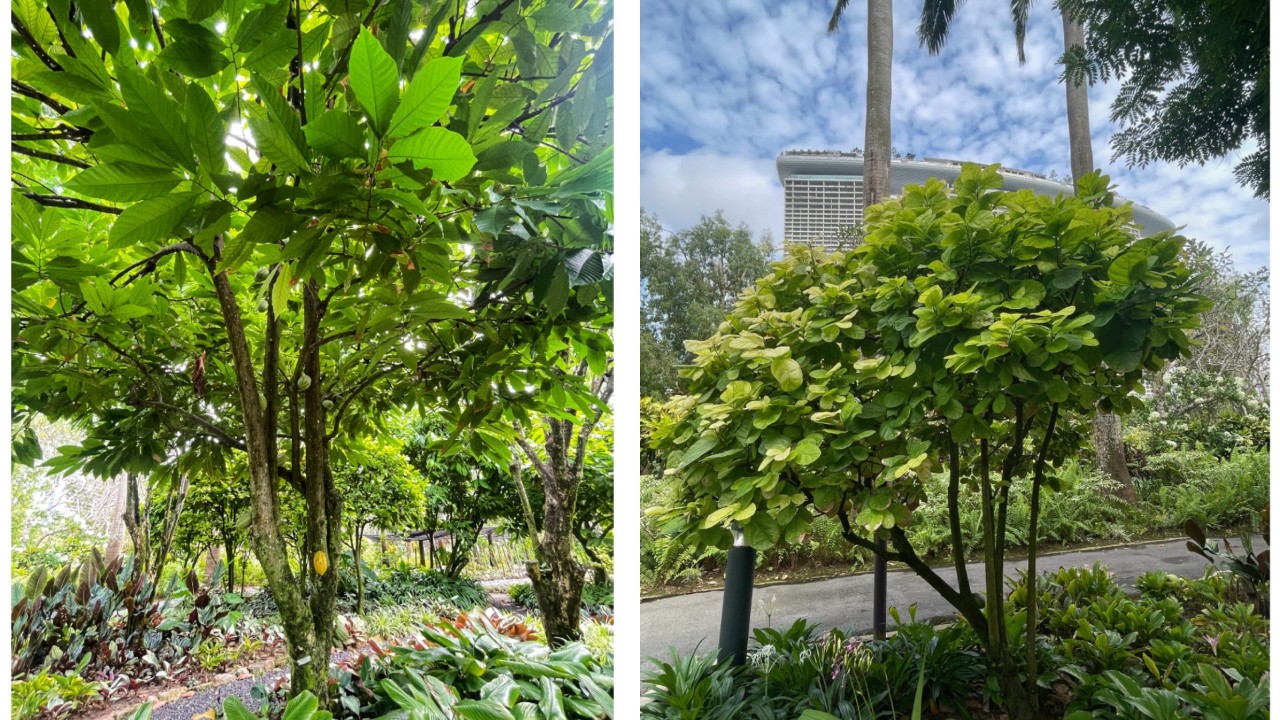 Cacao trees can vary widely in height, form, and leaf and fruit characteristics. Planted within our Colonial Garden are a taller form with ovate leaves that have pointed tips (left) and a shorter form with slender branches and rounded leaves (right). Look closely and see if you can spot developing fruits on both these trees!
Cacao trees can vary widely in height, form, and leaf and fruit characteristics. Planted within our Colonial Garden are a taller form with ovate leaves that have pointed tips (left) and a shorter form with slender branches and rounded leaves (right). Look closely and see if you can spot developing fruits on both these trees!
Native to wet, tropical forests of Central and South America, including the Amazon rainforest, cacao trees are short, understory trees usually 5 to 8m in height, though in the wild they can grow up to 20m tall. Their tiny pinkish-white flowers are only about 1.5cm in length and grow singly or in small bunches hanging directly from the main trunks and large branches. Recruiting even tinier insects, usually midges, to carry enough pollen from another cacao tree for effective cross-pollination, less than 10% of naturally-pollinated cacao flowers are successfully pollinated and only about 2% of those – 1 in every 500 flowers! - develop into a mature fruit!
Depending on the variety, cacao flower ovaries have about 30 to 80 ovules, each needing successful fertilisation to collectively develop into seeds in a mature fruit. If not enough ovules are pollinated, the seeds and whole fruit won’t develop! Research showed about four times the number of pollen grains are required for maximum fertilisation and seed development. Each midge might only transfer about 60 pollen grains per visit, requiring four visits per flower to transfer enough pollen – hence the very slim chances of successful fruiting!
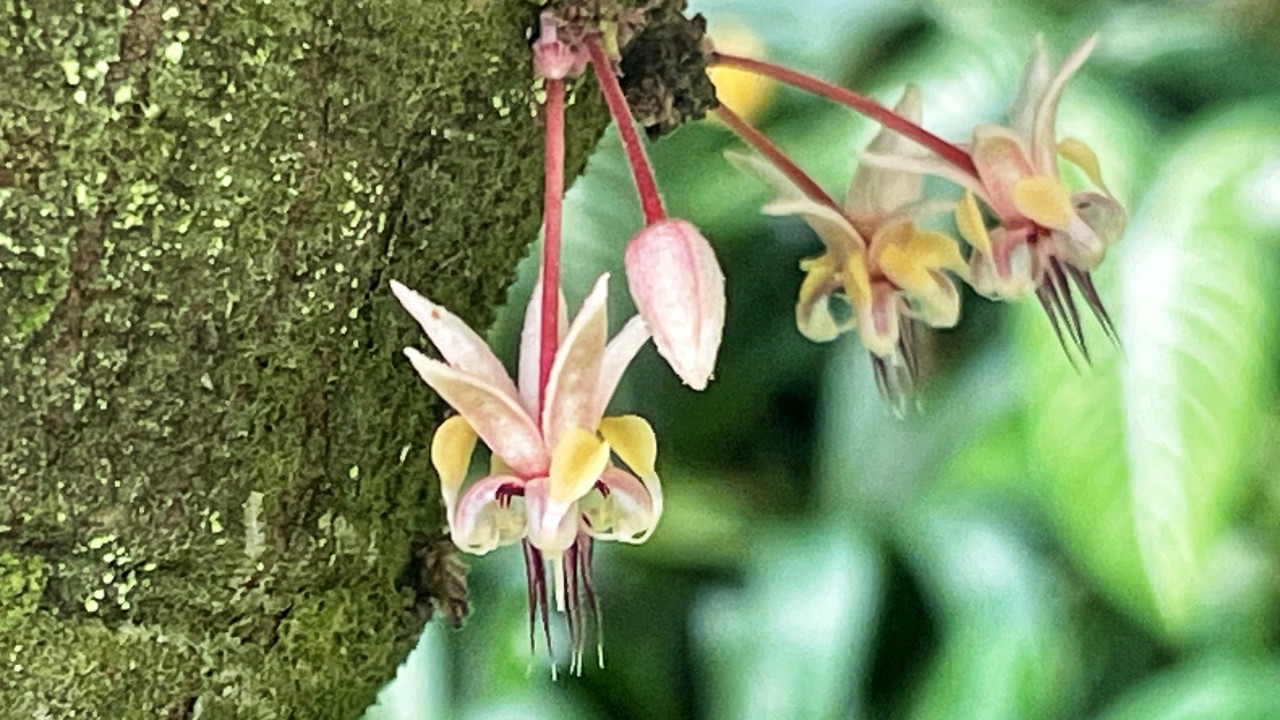 Cacao staminodes – the tiny purple and white-tipped, thread-like parts – form a cage around the shorter, white stigma – the female part of the flower. Only insects 0.5 to 2 mm in size are able to squeeze through the stamens to deposit pollen on the stigma, ideally picking up pollen from the nearby anthers in the process.
Cacao staminodes – the tiny purple and white-tipped, thread-like parts – form a cage around the shorter, white stigma – the female part of the flower. Only insects 0.5 to 2 mm in size are able to squeeze through the stamens to deposit pollen on the stigma, ideally picking up pollen from the nearby anthers in the process.
How then do cacao farms produce 4.4 million metric tons of seeds per year, especially in the West African countries of Côte d’Ivoire and Ghana which produce nearly 60% of global production? Hand-pollination – a meticulous, eye-straining process, using fine tools and steady hands to successfully transfer enough pollen to the stigma of each flower, only open for a single day and most receptive between 8-10am!
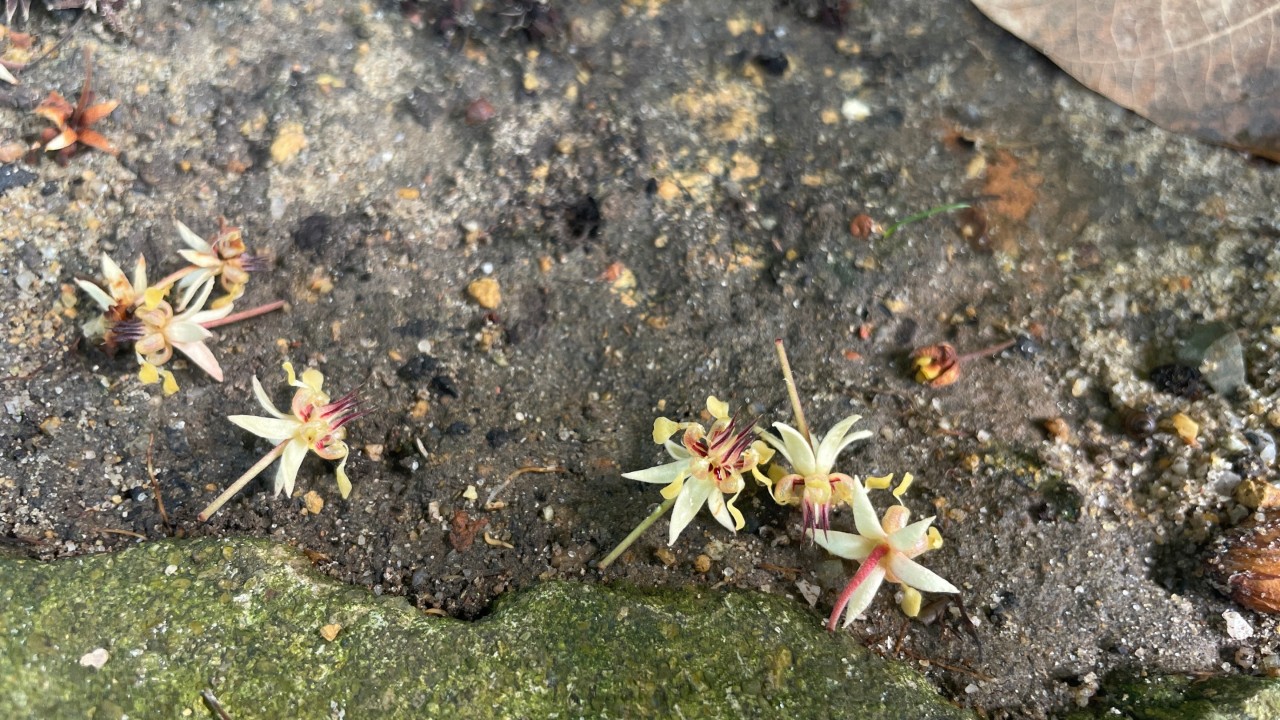 Cacao flowers only have a single day to bloom and be successfully pollinated! If not, they are shed the next day, littering the ground beneath the trees.
Cacao flowers only have a single day to bloom and be successfully pollinated! If not, they are shed the next day, littering the ground beneath the trees.
Fruit set in the cacao trees at Gardens by the Bay is all natural – as our busy horticulturists let our natural pollinators do the meticulous work of pollination! Our trees nevertheless do manage to develop some fruits, so come and spot them in the various stages of growth and development.
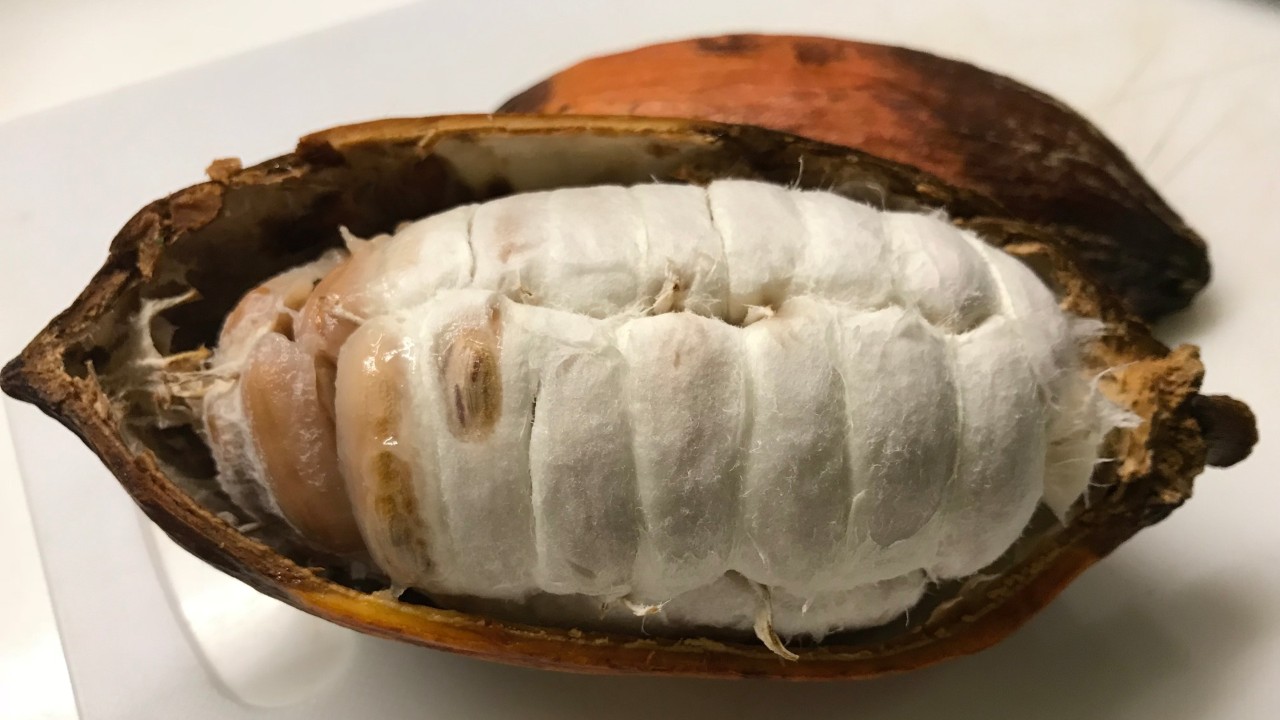 Grown at the Gardens, this ripe fruit was harvested and opened to reveal its contents – juicy, white flesh surrounding and hiding its large seeds.
Grown at the Gardens, this ripe fruit was harvested and opened to reveal its contents – juicy, white flesh surrounding and hiding its large seeds.
While you might know stories about how cacao seeds and beverages made from them were so valued by the Aztecs and Mayans that they were used as currency, consumed mostly by nobility, and used as offerings to the gods, there was a time long before that when cacao fruits were harvested by tribes in the Equadorian Amazon for a different product, resulting in the seeds thrown away as rubbish!
Want to find out what extra -special, rarely-known, edible part of the cacao fruit was so valued by those ancient Amazonian tribes? Come find out on our free, guided, weekend walking tour - A Sensory Stroll - Can Eat or Not? - and see the cacao trees for yourself in our Colonial Garden in Heritage Gardens!
Written by: Janelle Jung, Senior Researcher (Research and Horticulture)
A transplanted pake (Hawai'i-born Chinese), she's finding her own Singaporean roots. Every plant has a story, and Janelle helps discover and share these with colleagues and guests, hoping to spark a mutual plant passion! Ask her what plant she named her cat after!
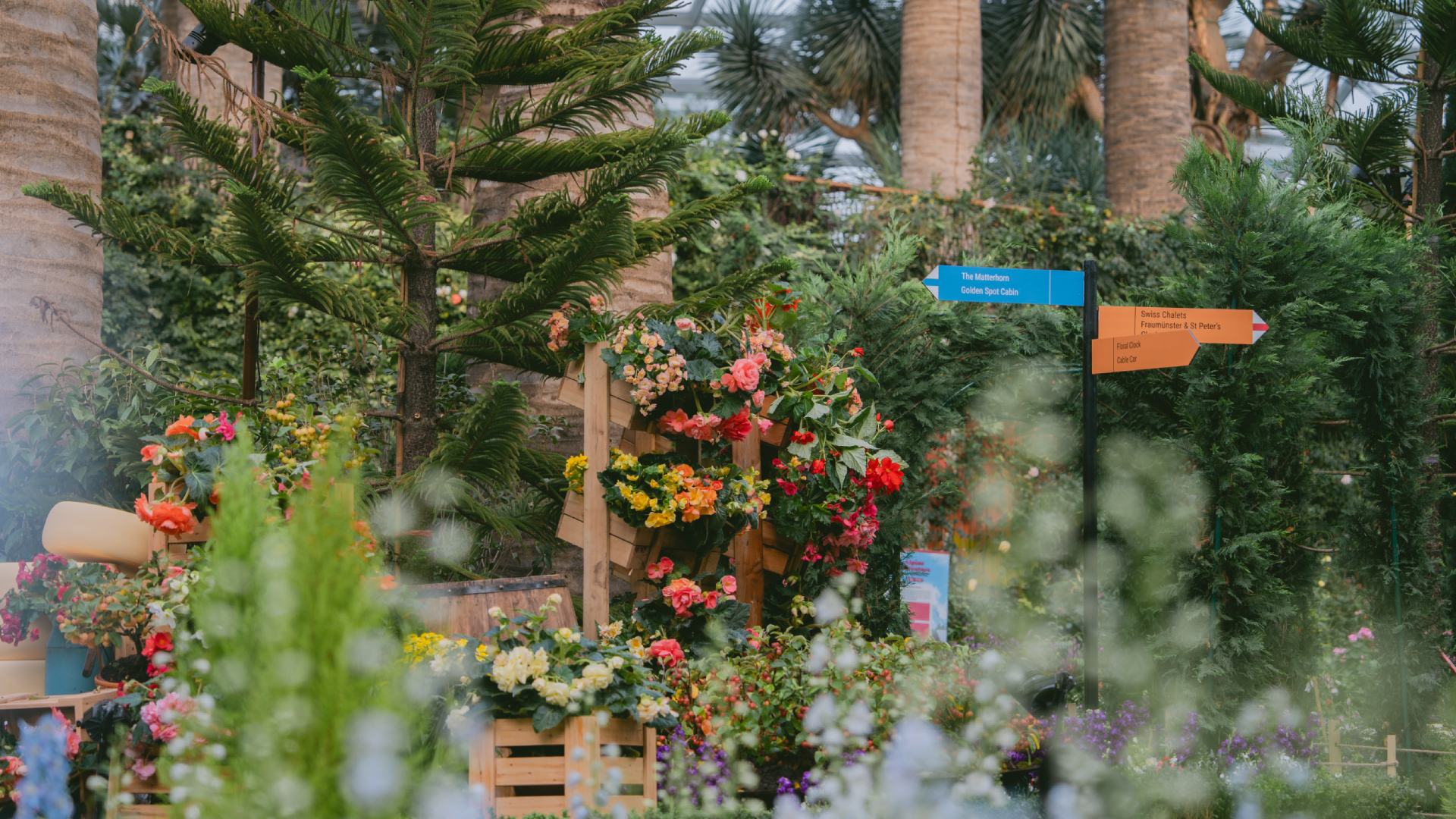
/1000x1000-thumb-whatsblooming_crescentia_cujete_Image01.jpg)
